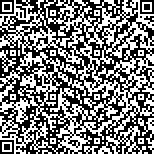| Quote
: |
潘国兴,易钢,卢彦杰.基于改进双聚类算法的中医治疗过敏性紫癜性肾炎用药剂量规律的研究[J].湖南中医药大学学报英文版,2023,43(10):1872-1879.[Click to copy
] |
|
| |
|
|
| This paper
:Browser 2118times Download 1101times |
| 基于改进双聚类算法的中医治疗过敏性紫癜性肾炎用药剂量规律的研究 |
| 潘国兴,易钢,卢彦杰 |
| (湖南中医药大学信息科学与工程学院, 湖南 长沙 410208) |
| 摘要: |
| 目的 采用模糊C均值聚类算法和改进的CC双聚类算法,对中医治疗过敏性紫癜性肾炎(Henoch-Schönlein purpura nephritis, HSPN)用药剂量进行数据挖掘,并结合中医理论,分析数据挖掘结果。方法 检索CNKI、万方数据库、维普中文期刊服务平台、中国生物医学文献数据库,自建库至2022年8月26日关于中医治疗HSPN的文献资料,提取其中的药物方剂。首先,使用模糊C均值聚类算法创建药物的大剂量、中剂量、小剂量隶属矩阵,将所有药物剂量进行分类,再结合改进的CC双聚类算法挖掘中医治疗HSPN关键药物的组分信息。结果 共纳入中医治疗HSPN处方387则,其中包括药物174味,高频药物(频次≥30次)38味,高频药物组合10组,常见药物剂量组合有大剂量水牛角、生地黄配小剂量小蓟(2∶2∶1);小剂量连翘配伍小剂量金银花(1∶1);大剂量当归配伍中剂量黄芪(1∶2)等,以清热解毒、疏散风热、益气活血药为主。结论 经改进的CC双聚类算法联合模糊C均值聚类算法,可以从众多的方剂数据集中挖掘出关键的药物组分,并根据药物的剂量大小进行区间划分,具有高效率数据挖掘的特点,可为HSPN中医临床治疗提供一定参考。 |
| 关键词: 数据挖掘 过敏性紫癜性肾炎 CC双聚类算法 模糊C均值聚类算法 用药规律 |
| DOI:10.3969/j.issn.1674-070X.2023.10.019 |
| Received:April 15, 2023 |
| 基金项目:湖南省中医药管理局项目(A2023048)。 |
|
| Dosage rules of Chinese medicines treating Henoch-Schönlein purpura nephritis based on the improved biclustering algorithm |
| PAN Guoxing,YI Gang,LU Yanjie |
| (School of Information Science and Engineering, Hunan University of Chinese Medicine, Changsha, Hunan 410208, China) |
| Abstract: |
| Objective To mine the dosage of Chinese medicines in treating Henoch-Schönlein purpura nephritis (HSPN) by Fuzzy C-means algorithm and improved Cheng-Church biclustering algorithm, and to analyze its data mining results combined with Chinese medicine theory. Methods CNKI, Wanfang, VIP, and China Biomedical Literature Database were searched, the literature on the treatment of HSPN by Chinese medicine was screened from the established time to August 26, 2022, and the medicines and formulas were identified. Fuzzy C-means clustering algorithm was used to set the high-, medium-, and low-dose membership matrices of medicines, and all the doses were classified, and finally the component information of key Chinese medicines for HSPN were mined with the improved Cheng-Church biclustering algorithm. Results A total of 387 formulas were included in the treatment of HSPN, with 174 medicines. Thirty eight high-frequency medicines were taken more than 30 times. Ten groups of high-frequency combinations include: high-dose Shuiniujiao (Bubali Cornu)+high-dose Shengdihuang (Rehmanniae Radix)+low-dose Xiaoji (Cirsii Herba) (2∶2∶1); low-dose Lianqiao (Forsythiae Fructus)+low-dose Jinyinhua (Lonicerae Japonicae Flos) (1∶1); high-dose Danggui (Angelicae Sinensis Radix)+medium-dose Huangqi (Astragali Radix) (1∶2), etc. The medicines mainly function is to clear heat and remove toxins, release the exterior with pungent-cool, benefit qi and circulate blood. Conclusion The improved Cheng-Church biclustering algorithm combined with fuzzy C-means algorithm can mine the key medicinal components from massive formula data, and the intervals can be divided according to the doses, which is highly efficient and can provide certain reference for TCM clinical treatment of HSPN. |
| Key words: data mining Henoch-Schönlein purpura nephritis Cheng-Church biclustering algorithm fuzzy C-means clustering algorithm dosage rules |
|

二维码(扫一下试试看!) |
|
|
|
|


